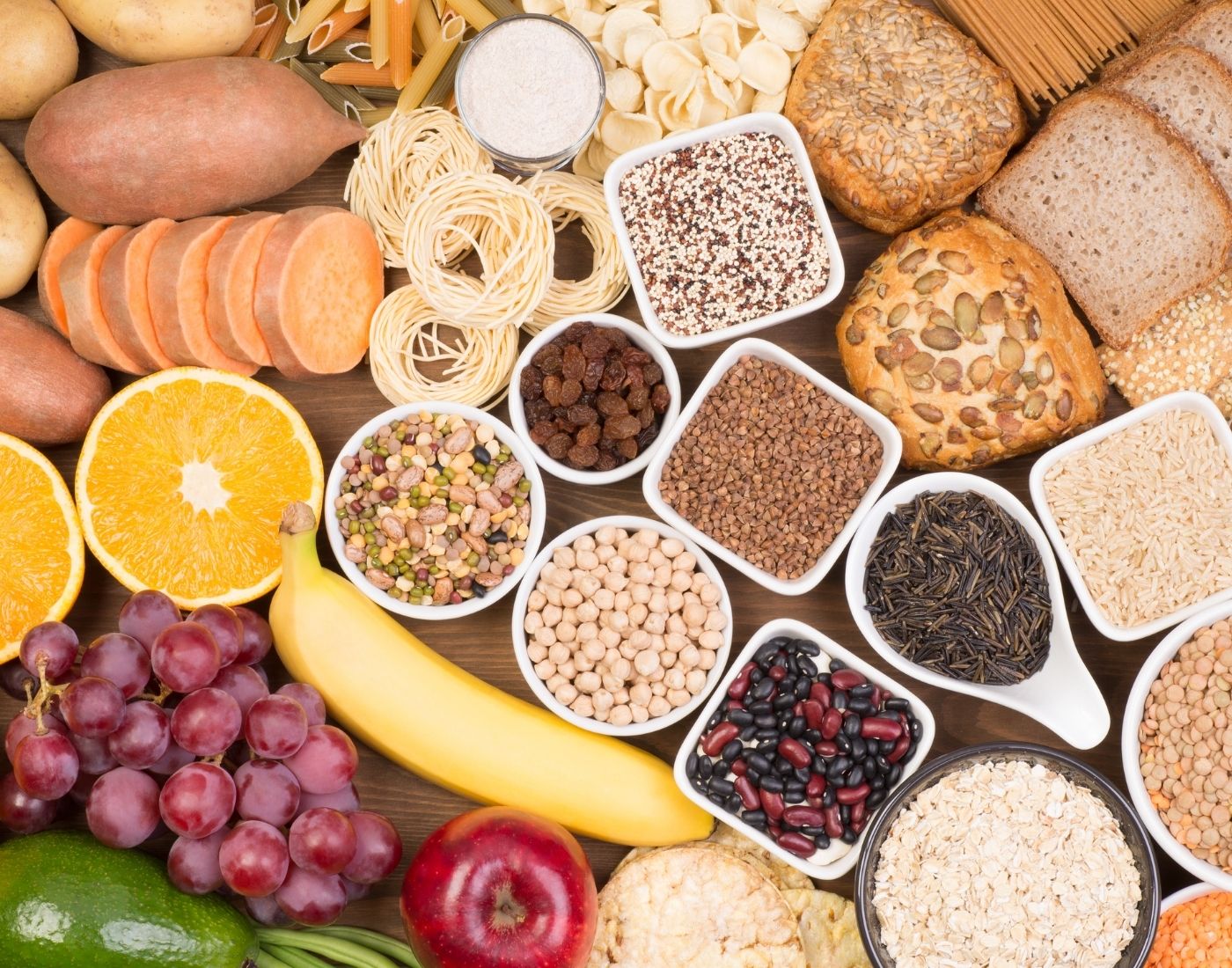- Fruit and vegetables
- Starchy food
- Dairy
- Protein
- Fat
You can read more about these below, including where to get them and how much you should eat.
A balanced diet is made up of the five food groups

You can read more about these below, including where to get them and how much you should eat.
Aim to eat at least five portions of fruit and vegetables daily. They provide essential vitamins, minerals, and fibre, which support digestion, lower cholesterol, and help prevent disease. Low in fat, they’re ideal for adding bulk to meals without many calories.
Tips to reach five a day:
What counts as one portion:
Also counts once per day:
Limit juice and smoothies to 150ml daily due to high sugar. Avoid dried fruit between meals to protect teeth.
Fresh, frozen, tinned or dried fruit and vegetables all count towards your five a day. Check the labels and choose low sugar and salt options.
Starchy foods like potatoes, bread, rice and pasta should make up around a third of what you eat. They’re a good source of energy and essential fibre, calcium, iron and vitamins. Gram for gram, starchy foods contain less than half the calories of fat. Try not to add extra fat to starchy food by adding butter, oil, spreads, cheese or jam – that’s just adding more calories.
It’s a good idea to base each meal around starchy foods. Try:
Wholegrain foods usually have more fibre and nutrients. They take longer to digest so they can help you feel full for longer. Good examples of wholegrains are brown rice, wholewheat pasta, whole oats, wholegrain breakfast cereals and wholemeal bread, pitta and chapatti. You can also buy higher fibre foods made with a combination of wholegrain and white flour, like 50/50 bread.
Always check the label to find lower salt and sugar versions.
Dairy and dairy alternatives are good sources of protein and vitamins. They also contain calcium, which helps keep our bones healthy and strong. Semi-skimmed, skimmed, and 1% fat milk all contain less fat than full-fat milk, but still give you protein, vitamins and calcium.
Dairy-free milk alternatives include soya milk and nut milks – if you chose dairy-free milk then go for unsweetened varieties which have been fortified with calcium.
Some dairy products like cheese and yoghurts can be high in salt, sugar or fat (especially saturated fat), so always check the label.
Some fat is essential, but most people eat too much. Unsaturated fats from plant oils like vegetable, rapeseed, and olive oil can help lower cholesterol and reduce heart disease risk. Lower-fat spreads are a healthier alternative to butter.
All fats are high in calories, so limit them to maintain a healthy weight.
Foods high in fat, salt, or sugar—like chocolate, cakes, biscuits, snacks, and sugary drinks—are high in calories but low in nutrients. In Scotland, they account for half of our sugar intake and around 20% of our calories and fat.
Eat these foods less often and in small amounts. Most people in Scotland need to cut sugar intake by two-thirds to reduce the risk of tooth decay and obesity.
Pulses
Beans, peas, and lentils are high in fibre, vitamins, and minerals, and low in fat. They count as one portion of your five a day, regardless of quantity. Pulses are ideal for adding bulk and texture to dishes like soups and sauces, helping reduce meat use, fat intake, and cost.
Fish
Eat at least two portions of fish weekly, including one oil-rich type (e.g. salmon, mackerel). These provide omega-3, vitamins A and D, and support heart health. Limit oil-rich fish to four portions a week due to low-level pollutants. Pregnant or breastfeeding individuals should follow specific guidance.
White Fish & Shellfish
Options like cod, haddock, and plaice are low in fat and rich in nutrients. Choose fresh, frozen, or tinned, but check salt levels in smoked or brined varieties.
Shark, Swordfish & Marlin
Adults should eat no more than one portion per week. These are unsuitable for children and pregnant women due to mercury content.
Eggs
Eggs are a nutritious protein source with no weekly limit. Cook by boiling, poaching, or scrambling to avoid excess fat. Use unsaturated oils if frying. Quiches and flans contain eggs but are often high in fat and salt.
Meat
Meat provides protein, vitamins, and B12. Handle and cook safely. Red meat (beef, lamb, pork) and processed meats (sausages, bacon, ham) can be part of a healthy diet, but limit intake to 70g per day to reduce bowel cancer risk. Choose lean cuts and trim visible fat.
Reducing Fat in Meat Dishes:
Other Plant-Based Proteins
Tofu, bean curd, mycoprotein, and Quorn are low-fat, high-protein alternatives to meat and work well in most recipes.